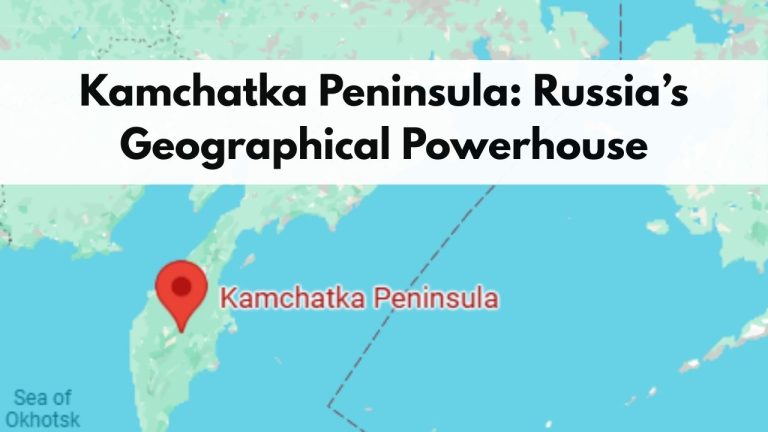Access the latest NCERT Solutions for Class 7 Geography, updated for 2024-2025. The solution is designed to help students to tackle difficult questions with ease. Our 7th class Geography NCERT Solutions are written in simple, easy to understand language.
Exercise
1. Answer the following questions:
(i) What is precipitation?
Precipitation refers to the process in which water in various forms (rain, snow, sleet, hail) falls from clouds to the Earth’s surface.
(ii) What is the water cycle?
The water cycle is the continuous process where water changes its form and moves between oceans, atmosphere, and land through processes like evaporation, condensation, and precipitation.
(iii) What are the factors affecting the height of the waves?
The height of the waves is influenced by wind speed, the duration of the wind, and the distance over which the wind blows (called fetch).
(iv) Which factors affect the movement of ocean water?
Ocean water movement is affected by wind, the Earth’s rotation (Coriolis effect), temperature differences, salinity levels, and gravitational forces from the moon and the sun.
(v) What are tides and how are they caused?
Tides are the rhythmic rise and fall of ocean water levels, caused primarily by the gravitational pull of the moon and the sun on Earth’s water bodies.
(vi) What are ocean currents?
Ocean currents are streams of water flowing continuously on the ocean surface in specific directions. They can be warm or cold and significantly affect climate and marine life.
2. Give reasons:
(i) Why is ocean water salty?
Ocean water is salty because it contains large amounts of dissolved salts, mainly sodium chloride. Rivers carry minerals from land into oceans, and evaporation leaves these salts behind, increasing the salinity.
(ii) Why is the quality of water deteriorating?
Water quality is deteriorating due to pollution from industrial waste, agricultural runoff (pesticides and fertilizers), and human activities like deforestation and overuse of water resources.
3. Tick the correct answer:
3. Tick the correct answer.
(i) The process by which water continually changes its form and circulates between oceans, atmosphere and land
(a) Water cycle ☑
(b) Tides
(c) Ocean currents
(ii) Generally the warm ocean currents originate near
(a) Poles
(b) Equator ☑
(c) None of these
(iii) The rhythmic rise and fall of ocean water twice in a day is called
(a) Tide ☑
(b) Ocean current
(c) Wave
4. Match the following:
(i) Caspian Sea (a) Largest lake
(ii) Tide (b) Periodic rise and fall of water
(iii) Tsunami (c) Strong seismic waves
(iv) Ocean currents (d) Streams of water moving along definite paths
(e) Water cycle
Ans.
(i) Caspian Sea – (a) Largest lake
(ii) Tide – (b) Periodic rise and fall of water
(iii) Tsunami – (c) Strong seismic waves
(iv) Ocean currents – (d) Streams of water moving along definite paths
Other important short answer-type questions
Based on Chapter 5: Water from the NCERT Class 7 Geography book, here are some important short answer-type questions with answers, useful for both school exams and competitive exams like UPSC:
1. Explain the water cycle.
The water cycle is the process by which water continuously moves between the oceans, atmosphere, and land. It involves four main stages: evaporation, where water from oceans and lakes turns into vapor; condensation, forming clouds; precipitation, where water falls as rain or snow; and runoff, where water returns to oceans through rivers and streams.
2. Why is water essential for life on Earth?
Water is crucial for all living organisms as it is involved in essential biological processes. It regulates body temperature, facilitates digestion, and is a medium for chemical reactions. Additionally, water is used in agriculture, industry, and daily household activities, making it vital for human survival.
3. What are the main sources of freshwater on Earth?
The major sources of freshwater on Earth include rivers, lakes, springs, and glaciers. These sources are critical as only 2.5% of the Earth’s water is fresh, and a large portion of this is locked in glaciers and ice caps.
4. What are ocean currents and how do they affect the climate?
Ocean currents are continuous, directed movements of seawater generated by forces such as wind, the Earth’s rotation, and water density. They are classified as warm or cold currents. Warm currents raise the temperature of nearby coastal regions, while cold currents cool them. These currents influence global climate patterns and weather systems.
5. What are tides and how are they caused?
Tides are the periodic rise and fall of sea levels, caused by the gravitational pull of the moon and the sun on Earth’s oceans. High tides occur when the water level is at its highest, and low tides occur when the water level is at its lowest.
6. How does human activity impact water availability?
Human activities like overuse of groundwater, pollution, and deforestation reduce the availability and quality of fresh water. Industrial discharge, agricultural runoff, and excessive urbanization contribute to water pollution and scarcity, making conservation efforts crucial.
MCQs: Water
Here are 20 multiple choice questions (MCQs) from Chapter 5: Water of the NCERT 7th Geography textbook, designed for competitive exams such as UPSC.
1. What is the process by which water continuously changes its form and circulates between oceans, the atmosphere, and land?
a) Evaporation
b) Precipitation
c) Water cycle
d) Condensation
2. What percentage of Earth’s water is found in oceans and seas?
a) 97.3%
b) 96.5%
c) 99.9%
d) 75%
3. What is salinity?
a) The amount of oxygen in water
b) The amount of salt in water
c) The percentage of water vapor in the air
d) The quantity of nutrients in freshwater
4. What is the main reason why ocean water is salty?
a) Evaporation
b) Dissolved salts
c) Marine life
d) Pollution
5. Which ocean current is an example of a warm current?
a) Labrador
b) Gulf Stream
c) Canary
d) Oyashio
6. Which of the following is the Japanese term for “harbor waves”?
a) Cyclone
b) Tsunami
c) Typhoon
d) Flood
7. What occurs when the water on the surface of the ocean rises and falls alternately?
a) Currents
b) Waves
c) Tides
d) Tsunami
8. What is the largest source of fresh water on Earth?
a) Rivers
b) Icecaps
c) Lakes
d) Groundwater
9. Which of the following bodies has the highest salinity in the world?
a) Arabian Sea
b) Red Sea
c) Dead Sea
d) Mediterranean Sea
10. What are tides caused by?
a) Wind
b) Earthquakes
c) Gravitational pull of the sun and moon
d) Ocean currents
11. Which type of tide occurs when the sun, the moon, and the earth are aligned in a straight line?
a) Neap tide
b) Spring tide
c) Low tide
d) High tide
12. When does a high tide occur?
a) When water recedes from the shore
b) When water rises to its highest level
c) When ocean currents are strong
d) When wind speed increases
13. What is the effect of warm ocean currents on the coastal regions they pass?
a) They raise the temperature
b) They lower the temperature
c) They cause flooding
d) They cause drought
14. What is the approximate salinity of ocean water?
a) 50 parts per thousand
b) 35 parts per thousand
c) 15 parts per thousand
d) 5 parts per thousand
15. Why is March 22 celebrated as World Water Day?
a) To promote the water cycle
b) To raise awareness about water conservation
c) To celebrate rainfall
d) To promote the use of ocean water
16. Which natural phenomenon is caused by underwater earthquakes, volcanic eruptions, or landslides?
a) Tsunami
b) Tide
c) Wave
d) Current
17. What are neap tides?
a) Tides with the lowest range
b) Tides with the highest range
c) Tides caused by earthquakes
d) Tides caused by wind
18. Which of the following is not a factor that affects the height of ocean waves?
a) Speed of the wind
b) Distance covered by the wind over water
c) Moon’s gravitational pull
d) Duration of wind blowing
19. What is the role of high tides in fishing?
a) Brings fish closer to the shore
b) Lowers the sea level
c) Affects fish movement negatively
d) Stops fish migration
20. Which ocean current is an example of a cold current?
a) Labrador current
b) Gulf Stream
c) Kuroshio
d) Equatorial current
Answers:
- c) Water cycle
- a) 97.3%
- b) The amount of salt in water
- b) Dissolved salts
- b) Gulf Stream
- b) Tsunami
- b) Waves
- b) Icecaps
- c) Dead Sea
- c) Gravitational pull of the sun and moon
- b) Spring tide
- b) When water rises to its highest level
- a) They raise the temperature
- b) 35 parts per thousand
- b) To raise awareness about water conservation
- a) Tsunami
- a) Tides with the lowest range
- c) Moon’s gravitational pull
- a) Brings fish closer to the shore
- a) Labrador current
Other Chapters
| Chapter 1:- Environment | Chapter 2:- Inside Our Earth |
| Chapter 3:- Our Changing Earth | Chapter 4:- Air |
| Chapter 6:- Human Environment | Chapter: 7- Life in the Deserts |





























